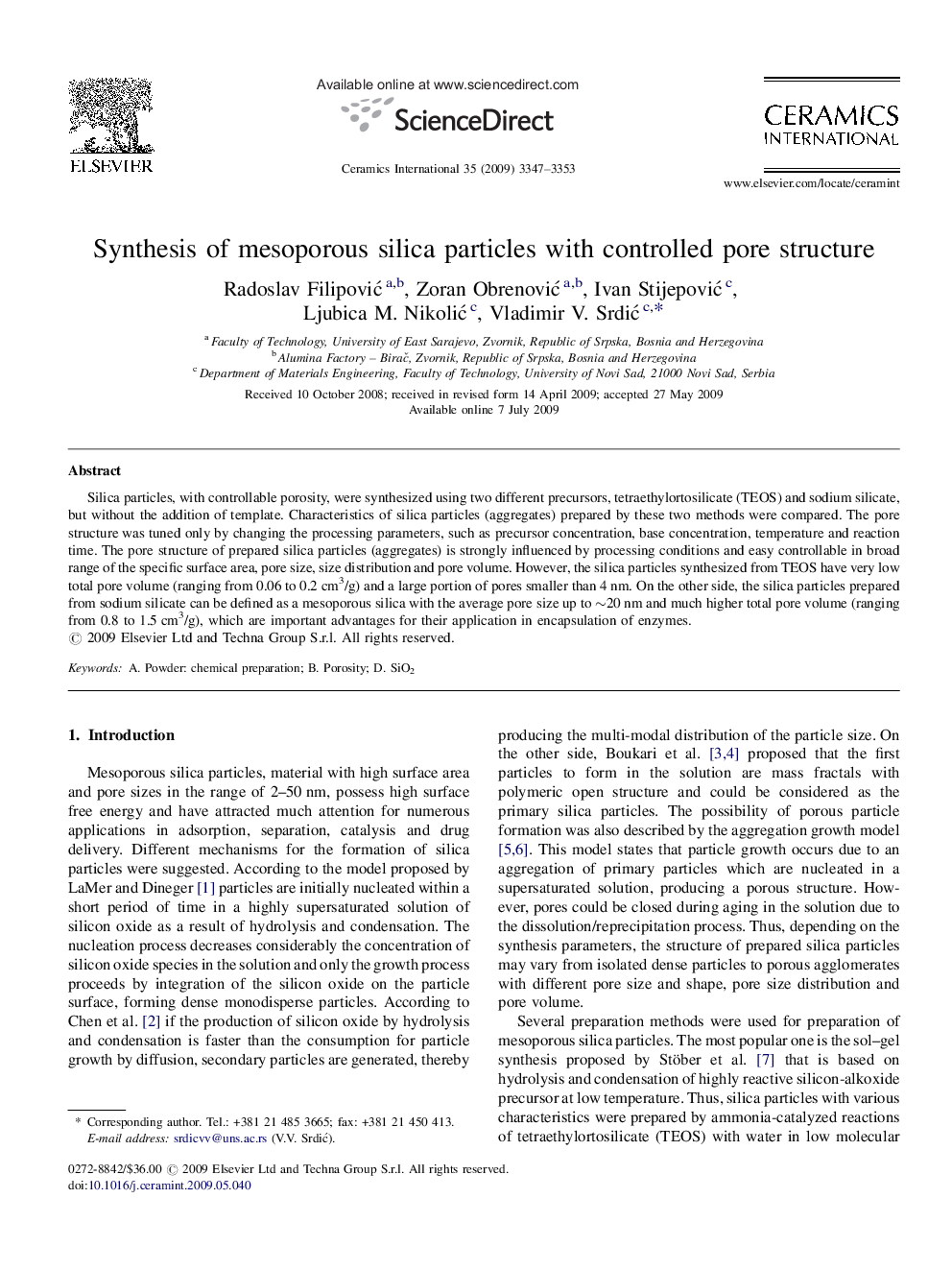| Article ID | Journal | Published Year | Pages | File Type |
|---|---|---|---|---|
| 1463326 | Ceramics International | 2009 | 7 Pages |
Silica particles, with controllable porosity, were synthesized using two different precursors, tetraethylortosilicate (TEOS) and sodium silicate, but without the addition of template. Characteristics of silica particles (aggregates) prepared by these two methods were compared. The pore structure was tuned only by changing the processing parameters, such as precursor concentration, base concentration, temperature and reaction time. The pore structure of prepared silica particles (aggregates) is strongly influenced by processing conditions and easy controllable in broad range of the specific surface area, pore size, size distribution and pore volume. However, the silica particles synthesized from TEOS have very low total pore volume (ranging from 0.06 to 0.2 cm3/g) and a large portion of pores smaller than 4 nm. On the other side, the silica particles prepared from sodium silicate can be defined as a mesoporous silica with the average pore size up to ∼20 nm and much higher total pore volume (ranging from 0.8 to 1.5 cm3/g), which are important advantages for their application in encapsulation of enzymes.
